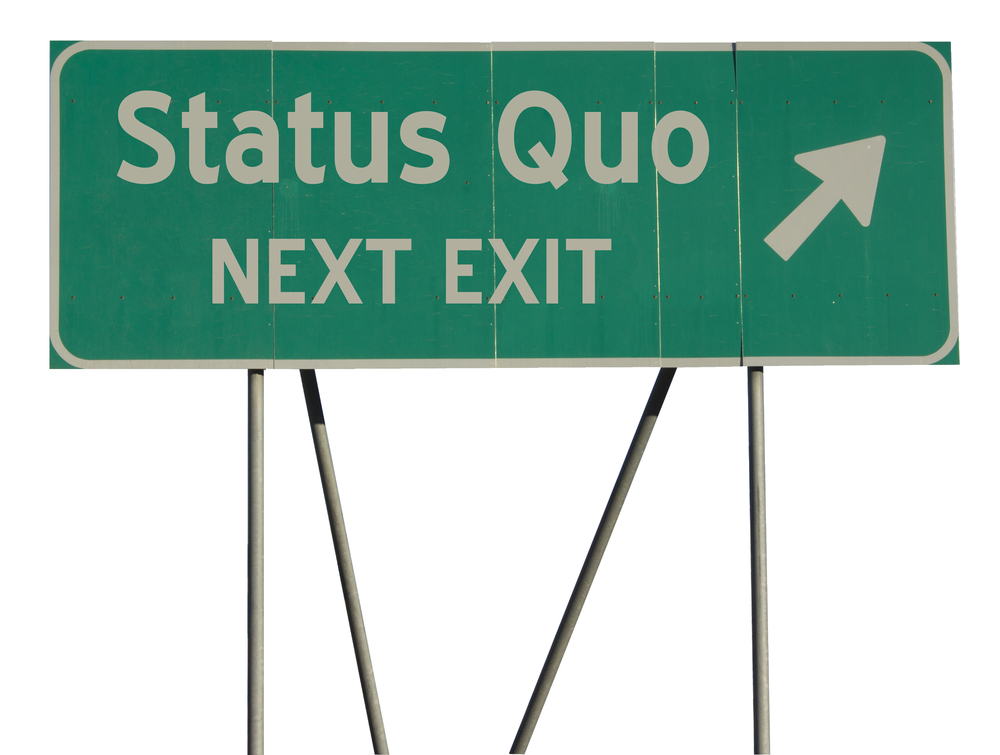Figuring Out Status Quo Meaning: Its Lawful Analysis and Practical Usage
Figuring Out Status Quo Meaning: Its Lawful Analysis and Practical Usage
Blog Article
Navigating the Dynamics of Condition Quo in Legal Solutions: An All Natural Technique
In the realm of legal systems, the idea of standing quo holds a considerable duty fit the foundation upon which legislations and guidelines are built. Understanding and effectively navigating the dynamics of the standing quo needs an alternative method that goes past simple surface-level analysis. By delving right into the complex interplay of different variables affecting the lawful status, one can reveal nuanced insights that lead the way for educated decision-making and tactical preparation. As we check out the intricacies bordering this critical aspect of legal structures, a deeper understanding of the difficulties and chances that include it emerges, advising us to reevaluate standard techniques and embrace a much more detailed point of view.
The Importance of Status Evaluation
In lawful process, conducting an extensive status evaluation is critical to understanding the current state of events and offering a structure for notified decision-making. This evaluation includes a detailed evaluation of existing conditions, agreements, and conditions that form the context within which legal activities are being considered. By evaluating the status, attorneys can determine crucial stakeholders, obligations and legal rights, possible risks, and possibilities for resolution.
Additionally, delving right into the status helps with the recognition of any type of gaps or inconsistencies that might exist, losing light on areas that require interest or explanation. This procedure aids in establishing realistic assumptions and developing strategies that align with the dominating conditions. Understanding the status is critical for establishing a roadmap that guides lawful procedures towards reliable end results while decreasing unplanned effects.
Eventually, a careful status quo analysis acts as a keystone for audio lawful recommendations and calculated preparation. It allows legal practitioners to browse intricacies, anticipate obstacles, and tailor their technique to accomplish beneficial outcomes for their clients.
Factors Influencing Legal Status Quo
Taking into consideration the complex web of legislations, guidelines, and societal standards, what are the primary factors that form and influence the lawful condition quo in modern lawful systems? Several key aspects play crucial functions in establishing the legal status quo within a lawful system. In addition, political dynamics and the equilibrium of power within a legal system can heavily influence the legal status quo.
Methods for Status Quo Administration
Efficient monitoring of the legal status quo needs a calculated technique that acknowledges the dynamic nature of lawful systems and the varied variables affecting them. One key technique for status quo administration is normal tracking and analysis of lawful growths.

Furthermore, efficient interaction and collaboration amongst stakeholders are necessary techniques for taking care of the standing quo in lawful systems. By fostering open discussion and cooperation in between policymakers, legal professionals, and other relevant events, prospective disputes can be dealt with proactively, and services can be created collaboratively to maintain a steady legal setting.
Challenges in Condition Quo Adjustment

Additionally, the lack of clear standards for navigating status modifications can create uncertainty and ambiguity. Lawful experts frequently locate themselves in undiscovered region when attempting to challenge existing standards or incorporate new legal frameworks. This can result in hesitancy and hesitation to depart from familiar practices, further restraining the adjustment process.

Applying Holistic Techniques
Incorporating an extensive viewpoint into lawful techniques is necessary for attending to the complex difficulties of modern lawful systems. Carrying out alternative methods involves a change towards viewing lawful concerns as interconnected components of a bigger system rather than isolated incidents. This requires a positive stance that takes into consideration not only the prompt legal implications but also the wider social, financial, and ethical influences of legal decisions.
One secret aspect of carrying out holistic methods is cultivating interdisciplinary collaboration within legal groups. By combining specialists with varied backgrounds such as regulation, psychology, economics, and sociology, an extra nuanced understanding of complicated legal concerns can be attained. This joint technique makes it possible for lawful professionals to establish a lot more reliable approaches that account for a large range of elements influencing the outcomes of legal instances.
In addition, embracing technology and data-driven insights is vital in executing alternative strategies in lawful systems. Leveraging tools like expert system for lawful research study, anticipating analytics for situation outcomes, and information visualization for offering complicated info can improve decision-making procedures and enhance overall lawful results. By incorporating these technical advancements right into legal technique, an extra all natural and reliable technique to dealing with legal challenges can be achieved.
Final Thought
To conclude, browsing the characteristics of status quo Full Article in lawful systems calls for a thorough understanding of the importance of standing quo evaluation, the numerous elements affecting legal standing quo, reliable strategies for condition quo administration, and the obstacles in standing quo adjustment. Implementing holistic methods is crucial for effectively handling and adjusting to the standing quo in legal systems. It is essential for legal experts to constantly adjust and examine to the transforming dynamics of the status to make certain reliable and efficient lawful results.
Considering the complex web of legislations, guidelines, and societal standards, what are the key elements that form and influence the legal standing quo in modern legal systems? A number of key factors play important roles in determining the legal status quo within a lawful system. It is the interplay of these aspects that jointly form and affect the legal condition quo in modern lawful check systems.
Reliable administration of the legal status quo needs a critical method that acknowledges the dynamic nature of legal systems and the diverse factors affecting them.In final thought, navigating the characteristics of standing quo in lawful systems needs a comprehensive understanding of the value of standing quo evaluation, the different variables affecting legal status quo, efficient approaches for standing quo management, and the obstacles in standing quo adjustment.
Report this page